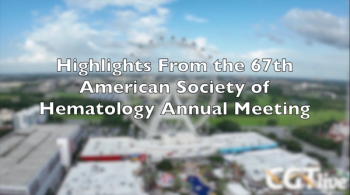
ICER Suggests $2.9 Million Cap for Hemophilia Gene Therapies
A final evidence report suggests a $1.9 million cap for val-rox and a $2.9 million cap for EtranaDez.
The Institute for Clinical and Economic Review (ICER)
“Hemophilia is a serious, lifelong disease, that leads to pain and disability as a result of repeated bleeds into joints and muscles, and can limit options for education, employment, and recreation,” David Rind, MD, chief medical officer, ICER, said in a statement.2 “Prophylaxis with factor replacement is burdensome and does not achieve normal clotting, although for patients with hemophilia A, emicizumab has reduced burdens and improved outcomes. The new gene therapies can result in successfully-treated patients appearing ‘cured’ for at least a period of time. During this period these gene therapies will eliminate the need for expensive prophylactic treatment. However, the duration of this ‘cure’ and the safety of therapies remain important uncertainties. At least with val-rox, patients will eventually return to needing prophylaxis.”
ICER shared their findings in an evidence report that will be reviewed at a virtual public meeting of the California Technology Assessment Forum (CTAF) on November 18, 2022. CTAF serves as one of 3 of ICER’s independent evidence appraisal committees and consists of practicing clinicians, methodologists, medical evidence experts and patient engagement and advocacy leaders. A draft of the report was previously open for a 4-week period in which comments by clinicians, drug manufacturers, and patients were reviewed and changes were made to the report.
ICER gave EtranaDez a B+ score for “moderate certainty” of a small or substantial health benefit and “high certainty” of at least a small net health benefit compared with factor IX prophylaxis. Data reviewed include an 80% reduction in treated joint bleeds and other bleeds after gene therapy treatment, however limited long-term follow-up safety and durability data hold the therapy back.
READ MORE:
ICER gave val-rox a C++ score for an overall “low certainty” of a net health benefit compared to emicizumab. Icer stated there was “moderate certainty” of a comparable, small, or substantial health benefit and “high certainty” of at least a comparable health benefit to factor VIII prophylaxis. Again, limited long-term follow-up safety and durability data leave the val-rox's net health benefit in doubt.
ICER considered the cost-effectiveness of a 1-time gene therapy treatment compared to a lifetime of prophylaxis but stressed that the eliminated cost of lifetime prophylaxis is in of itself too expensive to be considered cost-effective. ICER calculated the Health Benefit Price Benchmark of the 2 gene therapies by applying their alternative cost-effectiveness methodology that stakes into account cost offsets between the developer and the health system. These cost offsets are limited to $150,000 per year and the HPBB then ranges from $1.958 million to $1.963 million for val-rox and from $2.93 million to $2.96 million for EtranaDez. This cost range represents a recommendation for the highest price a manufacturer should charge at the point where higher prices would cause a disproportionate loss in health in patients in the US health care system.
The FDA accepted BioMarin’s
REFERENCES
1. Institute for Clinical and Economic Review. Gene therapy for hemophilia B and an update on gene therapy for hemophilia A: Effectiveness and value. November 3, 2022. https://icer.org/wp-content/uploads/2022/05/Hemophilia_Revised-Report_Updated_For-Publication_110322.pdf
2. ICER Publishes Evidence Report on Gene Therapies for Hemophilia A and B. News release. ICER. November 3, 2022. https://icer.org/news-insights/press-releases/icer-publishes-evidence-report-on-gene-therapies-for-hemophilia-a-and-b/
2. uniQure announces FDA acceptance of Biologics License Application for etranacogene dezaparvovec under priority review. News release. uniQure. May 24, 2022. https://tools.eurolandir.com/tools/Pressreleases/GetPressRelease/?ID=4109235&lang=en-GB&companycode=nl-qure&v=
4. FDA accepts BioMarin's biologics license application (BLA) for valoctocogene roxaparvovec AAV gene therapy for adults with severe hemophilia A. News release. BioMarin. October 12, 2022. https://www.prnewswire.com/news-releases/fda-accepts-biomarins-biologics-license-application-bla-for-valoctocogene-roxaparvovec-aav-gene-therapy-for-adults-with-severe-hemophilia-a-301647823.html
Newsletter
Stay at the forefront of cutting-edge science with CGT—your direct line to expert insights, breakthrough data, and real-time coverage of the latest advancements in cell and gene therapy.






























